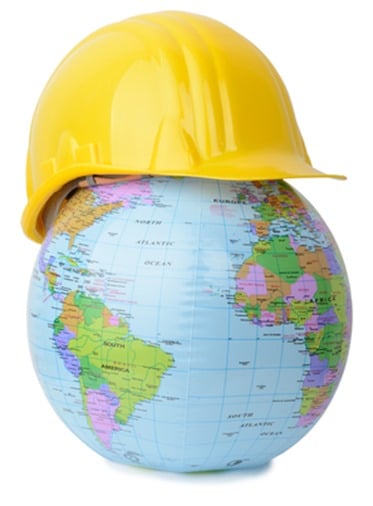 Making the World fit the Safety Worldview
Making the World fit the Safety Worldview
One of the drivers of the work of Martin Heidegger was his reaction to the determinist and reductionist view of Rene Descartes . The Cartesian worldview understands the world in an atomistic way, reducing certainty down to first causes. This is the view that dominates the archetype of Safety, exemplified by the quest to measure, judge, quantify and place risk on some arbitrary matrix. The worldview that dominates Safety is often referred to as STEM knowledge (Science, Technology, Engineering and Maths) . Now, there is nothing wrong with STEM knowledge but it is not the domain for understanding people, personhood, learning or non-linear, messy issues.
The hard sciences (STEM) are good at tackling materialist things. They are great at explaining forces, matter and energy but very poor at explaining ‘being’ (ontology). This is where Heidegger comes in. Understanding being (human being, experience and personhood) requires a different worldview than STEM knowledge. (Madsbjerg calls this ‘sensemaking’ http://www.redassociates.com/sensemaking/ ). STEM is evident in the way Safety fixates on Human Error. The recent discussion of algorithms (https://www.safetyrisk.net/the-new-safety-saviour-algorithms/) highlights the way Safety thinks. The idea that volume in data can give information about the social psychology of people is simply unhinged. STEM knowledge doesn’t provide a mode of thinking (critical thinking) like the humanities-based disciplines. STEM simply cannot help when it comes to cultural intelligence, this is the domain of the humanities, ethics and ‘poetics’. (https://en.wikipedia.org/wiki/Poetics).
Now before we get caught up in some competition between STEM and Humanities, this is not what I am arguing. Rather, it is in a transdiciplinary worldview that Safety will be best served as a helping activity. If safety is to do ‘safety differently’ then this is where curriculum reform needs to go. (https://www.safetyrisk.net/isnt-it-time-we-reformed-the-whs-curriculum/). Whilst it is good to talk about ‘safety differently’ there also needs to be some concrete change in policy and representation (eg. SIA) regarding curriculum or, Safety will simply keep on replicating itself (known as ‘social reproduction’ https://en.wikipedia.org/wiki/Social_reproduction). The issue is not one of ‘either-or’ (STEM or humanities) but rather ‘both-and’. At this stage of the development and history (something safety doesn’t study) of Safety there is simply no balance.
The challenge to bring a balance into safety should not be understood as an attack on engineers, regulators and Mathematics but rather an acknowledgement of the limits of those disciplines when it comes to helping and understanding human judgment and decision making. The reason why Safety struggles so much to make the world fit its worldview is that the STEM worldview is not equipped in the same way as humanities thinking is. Whilst STEM thinking is good at induction and deduction, it is quite lost when it comes to abduction and poetics (https://www.safetyrisk.net/to-err-is-human-to-forgive-divine/). One can have all the data in the world, algorithms and numerics but such are all interpreted through a worldview. What does an LTI of .6 mean compared to .8? How does that give any meaning to what is happening realistically, culturally and sub-culturally on site? How does a number help a safety person understand the ‘collective unconscious’ that frames decisions on site that don’t make sense under STEM knowledge? STEM may be able to explain a statistical relationship or significance but it cannot explain why it is so. (further read Slovic ‘Numbers and Nerves’, or Ziliak and McCLoskey ‘The Cult of Statistical Significance’).
STEM knowledge seeks to remove human error and bias from the safety equation and sees fallibility as a problem rather than a necessity for risk and learning. Instead, Safety assumes that ‘numbers speak for themselves’. Of course, this was all dismantled years ago by Kuhn, Feyerbend and Laktos (see further Kuhn ‘The Road Since Structure’, Feyerbend ‘Against Method’, Law ‘After Method, mess in social science research’) or here https://www.theguardian.com/commentisfree/belief/2012/oct/01/karl-popper-lakatos-kuhn-feyerabend or here: http://www.wuthrich.net/teaching/2013_145/Lect07_PopperEtAl.pdf
STEM is great at developing a nuclear weapon but lacks the knowledge to understand the ethics of setting one off. Safety is great at reporting injury data but is totally disconnected from understanding the complexities of mental health. The paradigms and ideologies of ‘zero harm’, ‘safety is a choice you make’ and ‘all accidents are preventable’ (topic of recent workshop to be held by SIA in Perth) are evidence of a worldview that simply doesn’t understand fallibility and risk. So if mental health is a form of harm, do people chose to be mentally unwell? Is all mental health preventable?
The study of being (ontology and phenomenology) or being-in-the-world, looks at the essence of persons and relationships. STEM can count how many people are in a cult but not explain why they are in it, nor why they behave as they do. STEM can account for all the paintings in the Louver but not why I cry standing in front of one. STEM is not the domain of thinking about culture, semiotics or discourse. Surely if we have a discipline that is about the safety of persons, we might undertake some study and understanding of the nature of personhood?
Many of these issues in critical thinking and safety philosophy will be tackled in the iThink Masterclass (http://cllr.com.au/product/ithink-critical-thinking-dialectic-and-risk-unit-12/) on 7,8,9 June in Canberra, open to people who have at least four units of study in the Social Psychology of Risk.
The next pre-qualifying unit is the SEEK Unit in the SPoR Certificate is on 5,6,7 July in Canberra http://cllr.com.au/product/seek-the-social-psyvhology-of-event-investigations-unit-2/



Do you have any thoughts? Please share them below